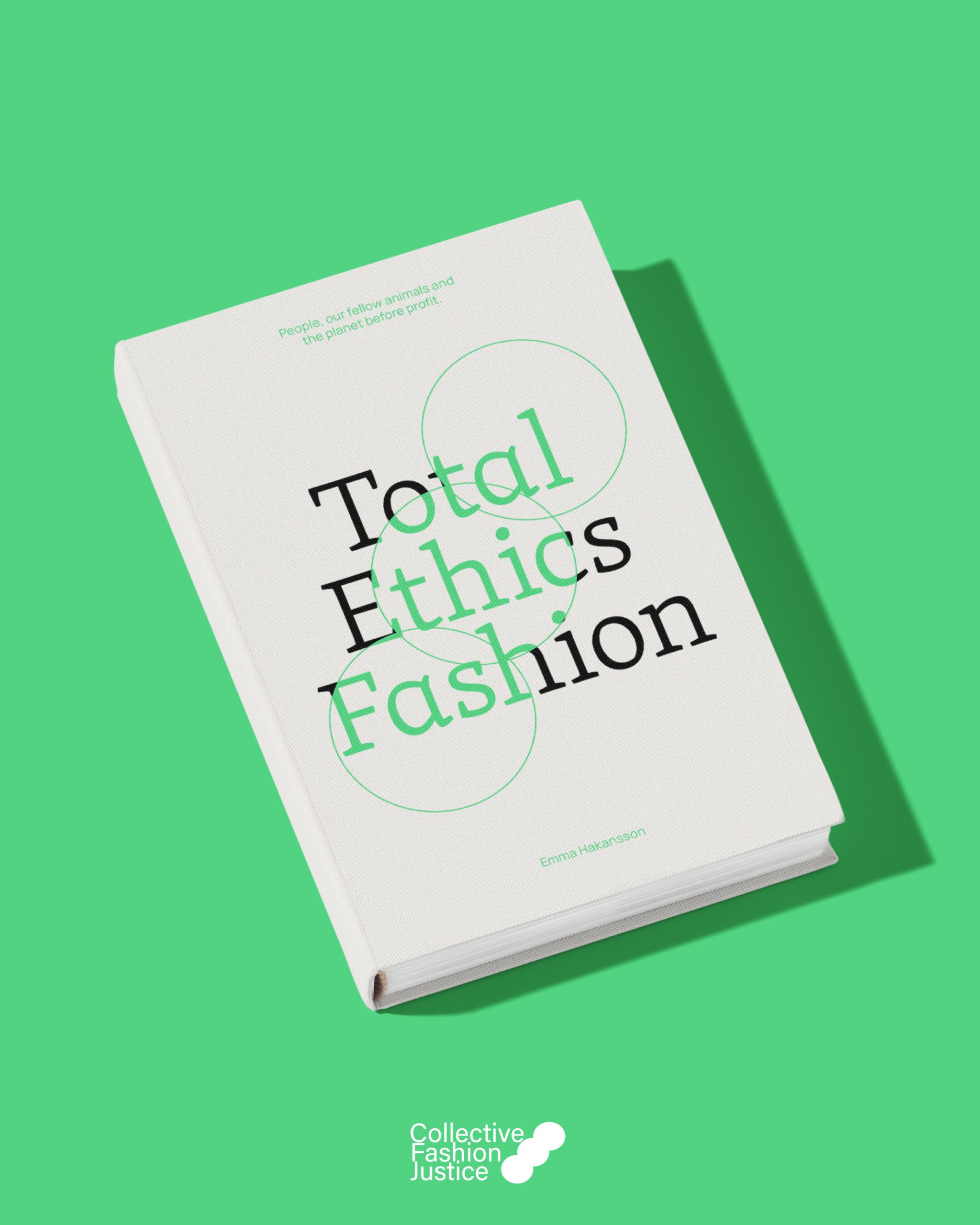
Have you ever seen a bag labelled as “fair” because it was made by someone paid a living wage, even though it’s made from the skin of a slaughtered animal?
How about a pair of shoes labelled as “cruelty free” because it’s free from animal skin, but the person who made them was exploited? Or what about a “sustainable” jacket made from recycled materials, but that is made unethically?
I coined the term “total ethics fashion” when I founded the charity I direct, Collective Fashion Justice. It was a response to the binary, at times exclusionary, approach to fashion activism that I was seeing.
Fundamentally, “total ethics fashion” asks that the industry making our clothes, shoes, and accessories protects nature. In that sense, it would be easy to consider it the same as “sustainable fashion.” But this term has been used to the point of meaninglessness, and in a sterile way—one that forgets that us humans and our fellow animals are a part of nature. There is no protecting some of us effectively without protecting all of us. We are one in the same.
“Ethical fashion” and “sustainable fashion” are widely spoken of today as two separate entities, important but unrelated causes. However, the two intersect all the time: through environmental racism; the polluting of human communities who suffer related health consequences; through fashion’s impediment of Indigenous land rights; and when the exploitation of individuals at once leads to environmental destruction.
The concept of total ethics fashion is as simple as it is vast: the life and wellbeing of the planet and all those who live here – us humans and the other animals here alongside us – must be prioritised before profit and production. Total ethics fashion doesn’t accept the protection of some at the expense of others, or a barren definition of environmental protection which claims to preserve the life of the environment, and yet not the lives of those on this planet, who are a part of this environment, be they human or non-human. It recognises that if we do not address harm and destruction in fashion holistically, we will never be rid of harm and destruction. It refuses binary or only partially collective thinking, advocacy and efforts. A dedication to total ethics fashion means a dedication to a genuinely holistic, full approach to fashion and to justice.
~ From the book, Total Ethics Fashion: People, Our Fellow Animals and the Planet Before Profit
There are a lot of things that need to change, be transformed, and reimagined in order for us to see a total ethics fashion future. But there are a handful of non-negotiable essentials:
>> The payment of living wages to everyone across the fashion supply chain.
>> A shift beyond fossil-fuel-based, animal-derived, and native deforestation-driven materials.
>> A transition to make the fashion industry slower and circular, producing in line with planetary boundaries.
These are the calls of Collective Fashion Justice’s total ethics fashion manifesto, endorsed by fashion designers, photographers, lecturers, scientists, students, whole schools, politicians, brands, and organisations.
These are not small asks of the fashion industry, but they are essential to move boldly toward. We cannot have a fashion industry that prioritises life and wellbeing ahead of profit while we have a fashion industry that commodifies individuals, that kills, that extracts from the planet without consideration for it, that is not built on a respect for autonomy and the need to allow the earth to continually regenerate itself.
There is no barrier to entry when it comes to contributing to creating a total ethics fashion system. You don’t need to buy anything—in fact, buying far less is a great way to participate. Instead, endorsing the manifesto, reading the Total Ethics Fashion book to learn more, and asking questions of brands that encourage them to make positive change are all wonderful places to start.

~
Please consider Boosting our authors’ articles in their first week to help them win Elephant’s Ecosystem so they can get paid and write more.











Read 0 comments and reply